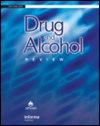Estimating the alcohol-related burden of child maltreatment among Māori in Aotearoa, New Zealand
Abstract
Introduction
To assesses the alcohol-related burden of child maltreatment among Māori in Aotearoa New Zealand. We compared the risk of child maltreatment among Māori (0–17 years) exposed to parents with alcohol-related hospitalisation or mental health/addiction service use. We also conducted a sensitivity analysis to estimate the number of cases of maltreatment that could be attributed to alcohol among Māori.
Methods
A cohort study of 16,617 Māori aged 0–17 and their parents from 2000 to 2017 was conducted using the Statistics New Zealand Integrated Data Infrastructure. A Bayesian piecewise exponential model estimated the risk of time to first child maltreatment event. This analysis used data from child protection, hospital, mortality and police records, and specifically focused on the risk associated with exposure to parents with an alcohol-attributable hospitalisation or mental health/addiction service use event. Potential confounders for both parents and Māori (0–17 years) were included. We calculated a population-attributable fraction to estimate the proportion of maltreatment cases that could be attributed to alcohol in 2017.
Results
Results showed a 65% increased risk for young Māori exposed to parents with heavy alcohol use. We estimated 17% of substantiated child maltreatment among Māori could be attributed to parental hazardous alcohol consumption.
Discussion and Conclusions
Severe or hazardous alcohol consumption among parents is a risk factor for child maltreatment among Māori. Māori alcohol consumption and harm are symptomatic of wider inequities related, among other things, to the ongoing effects of colonisation, as well as gaps in the regulation of alcohol sales.

 求助内容:
求助内容: 应助结果提醒方式:
应助结果提醒方式:


